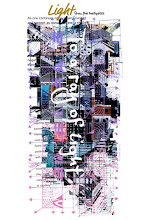The location of the Prout Village will be based on the assumption that natural disasters such as earthquakes, tsunamis, and landslides will occur, and high-risk areas will be avoided. Areas along the sea and rivers will be inundated by tsunamis and floods. As a lesson from earthquakes hundreds of years ago, stone monuments and documents may indicate the location of incoming tsunamis, which should also be used as a reference in making decisions.
The layout of the houses in Prout Village will not be linear as in a monetary society, but will be based on a circle, a flower of life pattern. Human consciousness is always influenced by space. For example, when people face each other and are in a linear relationship, as in a square desk, it is easy to form a sense of self and the other person. When all people face each other in the center of a circle, all people sitting next to each other become aware of each other as sympathetic people moving toward the same object, and a sense of community is easily created. For this reason, as shown in the following figure, houses should be arranged in a circle.
This municipality of 4km in diameter (2km radius), which we call Prout Village, is the unit of a town. First, the dwellings are built in a circle with dome houses, then six dwellings are arranged in a circle, and then seven circles come together to form a new circle, and so on, all arranged in a circle. In the center of the circle are the multipurpose facilities: the administration building, the art building, and the manufacturing building.
The circle with a diameter of 444 meters, where the multipurpose facilities are located, is the central plaza, which is large enough to hold four baseball stadiums and is used for sports, festivals, concerts, and other purposes that require a lot of space. A gymnasium will also be built in the circle where the art museum is located.
As of 2015, the average household size in Japan is about 2.5 people. The following figures show the change in the number of household members since the Edo period.
Japan's Edo period 1600s: 6 to 7 persons
Edo period 1750s 4 persons
Taisho and Meiji Periods 1868-1926 Average number of persons in a household: 5.02 persons
Showa era 1950s Average number of persons in a household: 5 (a couple with 3 children)
Showa era 1970s Average number of persons in household 3.69
Heisei era: 2010s: average household size 2.51 people
If we make it a Flower of Life city, 70,560 people can live in one Prout Village if all families have five members, and 42,336 people can live in one Prout Village if all families have three members.






0 コメント